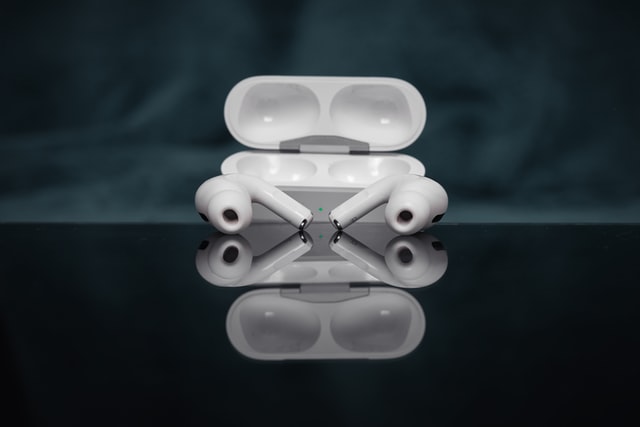When so many tools exist in an increasingly digital age for businesses to ease productivity and enhance marketing efforts, it’s no surprise that the headless CMS is becoming more of a trend. Headless CMS means content management systems where the presentation vehicle is decoupled from the back end of the content creation process. For a marketer, this adjustable, scalable content creation and dissemination option can change the game of operations and time-saving endeavors beyond comparison. Enter Storyblok the headless CMS that will render any marketer more productive.
What Makes a Headless CMS Ideal for Marketers?
Long ago, marketers operated with a legacy CMS which has the constraints that stifle growth and slow adjustments. For example, a legacy system is template-driven or at least has a standardized structure which makes it more difficult to adjust down the line or adjust across channels. Furthermore, adjustments are made in a mostly static atmosphere which means marketing has to continuously relay to development to adjust copy, which is time-consuming and boring. In the meantime, campaigns are left in limbo. But a headless CMS for marketing efficiency eliminates all of these issues because it separates the backend (wherever the content lives and is created/edited) from the frontend (wherever the content merely displays).
Such separation provides an advantage that a traditional CMS could never offer. By utilizing APIs, a headless CMS enables businesses to deliver content almost anywhere and on any device—from applications and websites to IoT devices and even AR and VR. Now think of a marketing department responsible for an international, multi-regional campaign. This group will love a headless CMS since they can create content one time and publish it internationally across regional websites, applications, and retail spaces. When product descriptions need to be modified in one area, storefront marketing images need to change, or regionally adjusted promotions need to be layered across branded networks, the managers can do so one time.
Then, it’s sent to all retail and digital spaces at once. This is far less busywork and far fewer mistakes across all channels. Also, the newfound ease of creation and publishing all in one place not only saves time but allows for consistent branding across the board digital print because it’s all in one place. This access makes marketers more aware of timing for campaigns, aware of changes in the field, and more responsive to audiences. Thus, in a relevant marketing approach, the brainstorming championed by the new, easy, flexible access addressed why a headless CMS can be so beneficial. No longer do marketing teams need to go to developers for every little thing, meaning they can fine-tune the more specific changes that can help make campaigns more fluid in an ever-changing world.

Faster Campaign Launches and Updates
It’s all about the marketing moment. Lose a marketing moment and you lose potential income, and someone else, probably your competitor has already gained it from you. This is the problem for many companies still relying on a legacy CMS. A legacy CMS takes time to update content; even the simplest update requires involving a developer. This is not true, however, for a headless CMS. There are no such roadblocks. Everything needed is at the marketer’s fingertips, and any modification can be completed solo in real-time without waiting for IT. Meanwhile, platforms like Storyblok enhance this very process through an easy-to-use visual editor. Therefore, the marketing team can easily edit, preview, and publish changes in real-time and with minimal lag.
When a marketer has to change a banner, landing page, product description, or any other marketing endeavor, it takes a few clicks and the cohesive presentation is instantly altered to reflect what the business wants. Yet this is possible. For example, a simultaneous effort across channels can occur when a product debuts and real-time adjustments must be made to ensure the new product takes off. A team can change marketing banners, update product descriptions, and revamp landing pages simultaneously across a website, app, or even the displays in brick-and-mortar locations. A headless CMS allows for this type of integration because of its composable content; everything exists in one place but can automatically be distributed across all channels and touchpoints at one time.
The ability to do so quickly and with such straightforward access empowers companies to capitalize on real-time occurrences and spread the word about their discoveries and recommendations based on marketplace feedback or product feedback adjustments. What’s more, the productivity of the team benefits from a headless CMS’s effectiveness in content generation and access. The marketers don’t have to worry about their campaigns and campaign strategies. The developers don’t have to worry about their powerful front-end displays and integrations. Segmented responsibility fosters collaboration, and the technical and non-technical elements can always work simultaneously with no friction for a common purpose. Removing the limitations of content updates that previously held so many in their tracks, a marketing-focused headless CMS allows companies to stay agile and competitive in an ever-evolving digital landscape with faster time to market, more effective campaigns, and additional touchpoints to engage audiences and succeed. A headless CMS is the game changer for anyone looking to leverage advanced marketing capabilities.
Scalability for Growing Marketing Needs
Yet, as companies expand, content creation and maintenance across various platforms and digital touchpoints become increasingly difficult and more time-consuming. Complicated by the addition of new platforms and sites in new locations with new audiences, the need for effective systems and integration to support these new locations is essential. Thus, a particular kind of content management system is beneficial to this one. A headless CMS is a content management system that fulfills much of the content creation and management purpose and, at the same time, decentralizes therefore facilitating localization efforts with great ease.
For instance, businesses with multilingual marketing campaigns need to only access one content library via a headless CMS yet can render region-specific alterations more appropriate to varying languages and cultural associations. Furthermore, businesses that perform mergers and acquisitions with new markets have the opportunity to seamlessly adjust their digital footprint to accommodate localized requirements without a content infrastructure overhaul learning curve. This means that businesses are perennially flexible, perennially positioned for adjustments to needs and opportunities without the transition time and effort. Storyblok, as one of the leading headless CMS options, would easily support such scalable projects, providing a fluid modular content solution.
This means that once created by marketers, banners, product copy, and action buttons can be easily adjusted for different channels or sections. For example, a retail company operating globally can make one sales banner and use it on the ecommerce site, within the mobile app, and for digital signage only needing to adjust secondary copy for the country’s language and pricing. Therefore, this avoids redundancy and supports a consistent brand experience across any frequency of engagement. Such scalability assists in rising digital needs. From longer content libraries to quicker deployment of new initiatives, brand consistency reigns supreme across all avenues and all sites.
This level of productivity and success is precisely why such software should be adopted now and into the future, relying on headless CMS solutions like Storyblok for current marketing needs and future growth. A headless CMS solution is a content paradise with a centralized location and decentralized options; thus, businesses are always good to go and good to grow.
How Storyblok Drives Marketing Efficiency
Storyblok is one of the best headless CMSs, and it boasts marketing efficiency from accessibility to its API-powered potential. For instance, the visual editor allows non-technical users to complete the creation and editing of content, while the developers need to only concentrate on the front-end optimization. This division of roles fosters cross-collaboration, as people can work concurrently without bothering one another. In addition, Storyblok integrates seamlessly with other marketing solutions for plug-and-play of data-driven efforts and customized experiences. The ease of being so adaptable and adding on with a modular content system gets a company to a campaign quicker, simpler, and more efficiently.
Why Marketing Teams Should Embrace a Headless CMS
When the future of operation is productivity and flexibility, having a headless CMS is no longer an option. When marketers can manage content from any channel, develop customized goods and experiences, and expand rapidly, the relationship between brands and consumers is forever altered. Thus, those marketing teams positioned to enhance productivity and creativity will find the next step into the future of improved marketing capabilities is a headless CMS. For example, Storyblok is easy to use and has a contemporary design, the ideal case of how a headless CMS can give any company what it needs.











